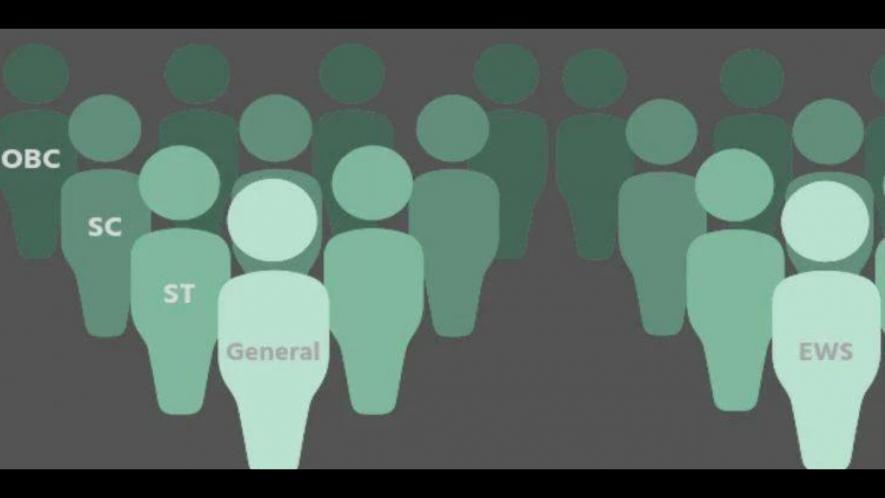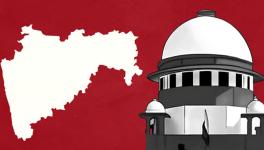The Year That Was-6: Sub-categorisation in Reservations

One of the defining legacies of former Chief Justice of India (CJI) Dr D.Y. Chandrachud is the unveiling of an Indian version of the Lady Justice statue. In a drastic shift, she is not blindfolded, signifying that now our all-seeing Lady Justice recognises and acknowledges the social realities of society.
The seven-judge Bench decision in Davinder Singh, upholding the sub-categorisation within the Scheduled Castes is an important judgment of the year and will go down as an example of an empathetic judicial system acknowledging the social realities of Indian society.
The judgment rightly recognises the caste system’s hierarchical structure of ‘graded inequality’, in a fragmented society with numerous sub-castes, each asserting superiority over those ranked below.
The judgment rightly recognises the caste system’s hierarchical structure of ‘graded inequality’.
Reliance on Empirical Data to Rationalise Sub-Classification
Firstly, CJI Chandrachud takes the help of field research and observes that there is no sense of homogeneity among Scheduled Castes, and rightly recognises that there are ‘Backward Castes’ within the ‘Scheduled Castes’. The CJI, with the help of empirical data, further highlights the discriminatory practices within the Scheduled Castes in Gujarat, such as denial of inter-dining, access to burial grounds and temple entry.
Similarly, it relies on the findings of the Usha Mishra Committee report indicating Untouchability practices among the Mala satellite castes, with Mala Jangam at the top of the hierarchy, followed by Mala Pambala, Masti and Gurra Malas. Through the reliance on empirical evidence to make an informed decision to hold that Indian society is heterogeneous, the Supreme Court sets the right precedent for courts to reflect upon social realities.
Legislative Competence to Sub-Classify
The majority in Davinder Singh, overruling the decision in E.V. Chinnaiah, bifurcated the role of the President and the State’s legislative competence.
The CJI held that while under Article 341(1), the President has the power to notify, amend, vary or rescind the list of Scheduled Castes, Article 341(2) explicitly removes the power of the President, and implicitly extends this bar to the state legislature, to include or exclude communities from the said list, and instead, this authority is entrusted with the Parliament.
Accordingly, he held that the bar under Article 341 (2) cannot be extended to frame reservation policies.
“Articles 15(4) and 16(5) recognise the power of the State to make special provisions for the advancement of the Backward Class, including the Scheduled Castes. These provisions permit the State to confer the benefit of affirmative action on classes where it is most necessary.
“Thus, the power of the State to sub-classify the Scheduled Castes for the purpose of affirmative action, including reservations, is traceable to these Articles,” the CJI writes.
Justice Gavai, furthering these reasons, examines the limited objective of Article 341 as follows: “As already discussed hereinabove, Articles 341 and 342 are only with regard to identification of the Scheduled Castes and Scheduled Tribes.
“Articles 341 and 342, read with Clauses (24) and (25) of Article 366 of the Constitution provide that those castes included in the Presidential List shall be deemed to be Scheduled Castes and Scheduled Tribes for the purposes of the Constitution. However, at the cost of repetition, I reiterate that Articles 341 and 342 do not deal with reservation.”
Principle of Substantive Equality
Substantive equality goes beyond formal equality by acknowledging that identical treatment of individuals may not yield true equality due to historical disadvantages and social inequalities.
The Indian Constitution embodies this principle, particularly in Articles 14, 15 and 16, which aim to ensure equal treatment and equitable outcomes. It was in State of Kerala versus N.M. Thomas that the articulation of substantive equality with the interrelationship of Articles 14, 15 and 16 as the ‘Equality Code’ was recognised.
In Davinder Singh, Chief Justice Chandrachud, relying on N.M Thomas, held that sub-classification recognises the varying degrees of backwardness and furthers the constitutional goal of substantive equality: “The object of the special provisions in Articles 15(4) and 16(4) is to provide substantive equality to the beneficiary class.
“Inter-se backwardness within the class is a roadblock to achieving substantive equality. Sub-classification is one of the means to achieve substantive equality.”
Furthermore, CJI Chandrachud also held that the reservation policy itself furthers substantive equality and that the obligation of the State to maintain the efficiency of administration is to be equated with the facet of the principle of equal opportunity, enunciated in our Constitutional Equality Code.
The CJI further extended the concept of substantive equality and drew a clear distinction between “adequate representation” and “effective representation”, emphasising that the objective under Article 16(4) can only be truly achieved if the inadequacy of representation is assessed beyond mere numerical strength: “Opportunities for real and effective representation must be created in all posts and grades.
“The objective of the provision is not to emulate the existing social hierarchy where the low-grade posts are occupied by the socially backward while supervisory and managerial posts continue to be occupied by the advanced classes.
“If the objective of Article 16(4) is to be achieved in the truest sense, the inadequacy of representation must not be determined only on the basis of the total number of members of the backward class in the services of the State but by assessing the representation of the class across various posts.”
The CJI further extended the concept of substantive equality and drew a clear distinction between “adequate representation” and “effective representation”.
Creamy Layer: A Tunnel Vision Approach
While Lady Justice was conscious of the social reality of graded society, she was again blindfolded when the entire blame for the failure of the policy to reach the Backward Castes among the Scheduled Castes was placed on the same Scheduled Caste members.
Justice Gavai opined that “categories who are availing of a large chunk of reservations are denying special treatment to the less privileged among them”, and, therefore, a solution is needed in the applicability of the creamy layer principle.
However, this resolution discharges the State from its responsibility and fails to consider the objective of the reservation policy to address the nature of the permanent caste stigma attached to one’s birth, in all spheres of life and not as a poverty alleviation programme.
Basawa Prasad Kunale is an advocate practicing in the High Court of Karnataka. He recently graduated with a master's in law from The National Law School of India, Bengaluru. The views are personal.
Courtesy: The Leaflet
Get the latest reports & analysis with people's perspective on Protests, movements & deep analytical videos, discussions of the current affairs in your Telegram app. Subscribe to NewsClick's Telegram channel & get Real-Time updates on stories, as they get published on our website.
























